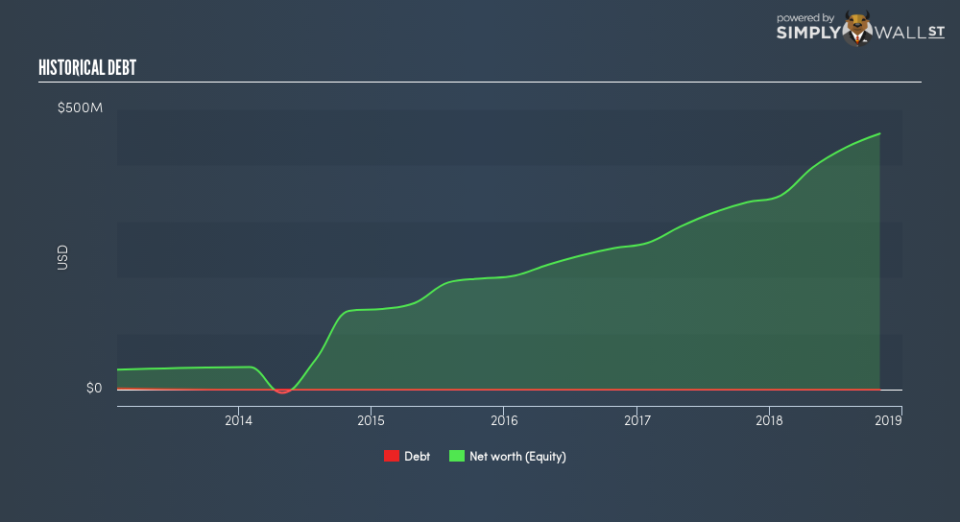What You Must Know About HealthEquity, Inc.’s (NASDAQ:HQY) Financial Health

Stocks with market capitalization between $2B and $10B, such as HealthEquity, Inc. (NASDAQ:HQY) with a size of US$3.6b, do not attract as much attention from the investing community as do the small-caps and large-caps. Despite this, commonly overlooked mid-caps have historically produced better risk-adjusted returns than their small and large-cap counterparts. This article will examine HQY’s financial liquidity and debt levels to get an idea of whether the company can deal with cyclical downturns and maintain funds to accommodate strategic spending for future growth. Don’t forget that this is a general and concentrated examination of HealthEquity’s financial health, so you should conduct further analysis into HQY here.
Check out our latest analysis for HealthEquity
Is HQY’s debt level acceptable?
A debt-to-equity ratio threshold varies depending on what industry the company operates, since some requires more debt financing than others. Generally, mid-cap stocks are considered financially healthy if its ratio is below 40%. The good news for investors is that HealthEquity has no debt. This means it has been running its business utilising funding from only its equity capital, which is rather impressive. Investors’ risk associated with debt is virtually non-existent with HQY, and the company has plenty of headroom and ability to raise debt should it need to in the future.
Can HQY meet its short-term obligations with the cash in hand?
Given zero long-term debt on its balance sheet, HealthEquity has no solvency issues, which is used to describe the company’s ability to meet its long-term obligations. But another important aspect of financial health is liquidity: the company’s ability to meet short-term obligations, including payments to suppliers and employees. With current liabilities at US$17m, the company has been able to meet these obligations given the level of current assets of US$364m, with a current ratio of 20.91x. However, a ratio above 3x may be considered excessive by some investors, yet this is not usually a major negative for a company.
Next Steps:
HQY has zero-debt in addition to ample cash to cover its short-term liabilities. Its safe operations reduces risk for the company and shareholders, though, some level of debt could also boost earnings growth and operational efficiency. Keep in mind I haven’t considered other factors such as how HQY has performed in the past. I recommend you continue to research HealthEquity to get a better picture of the stock by looking at:
Future Outlook: What are well-informed industry analysts predicting for HQY’s future growth? Take a look at our free research report of analyst consensus for HQY’s outlook.
Valuation: What is HQY worth today? Is the stock undervalued, even when its growth outlook is factored into its intrinsic value? The intrinsic value infographic in our free research report helps visualize whether HQY is currently mispriced by the market.
Other High-Performing Stocks: Are there other stocks that provide better prospects with proven track records? Explore our free list of these great stocks here.
To help readers see past the short term volatility of the financial market, we aim to bring you a long-term focused research analysis purely driven by fundamental data. Note that our analysis does not factor in the latest price-sensitive company announcements.
The author is an independent contributor and at the time of publication had no position in the stocks mentioned. For errors that warrant correction please contact the editor at editorial-team@simplywallst.com.

